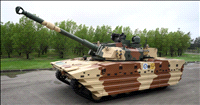Cool, cool India: an AC perspective
By Mohini Bhatnagar | 23 Mar 2000
Take the air-conditioner marketers, who are busy, bent over the strategy board, working and reworking plans. Marketing budgets are being reconsidered, as are the products and their positioning. In spite of the fact that its market share has slipped by four percentage points to 28 per cent in the past couple of years (1999 turnover: Rs 404.4 crore), Carrier is aggressively talking about increasing its market share to 30 per cent in 2000 (). Voltas,which lost its dominant position to Carrier quite a while back, is talking focus and push in order to improve on its diminishing sales. The company has, according to published figures, lost market share to the tune of seven per cent, down from 28 per cent, in the last two years ().
to 30 per cent in 2000 (). Voltas,which lost its dominant position to Carrier quite a while back, is talking focus and push in order to improve on its diminishing sales. The company has, according to published figures, lost market share to the tune of seven per cent, down from 28 per cent, in the last two years ().
Selling air-conditioners promises not to be a cool affair for these two marketers; rather, it's not going to be cool for any AC marketer, thanks to the market getting increasingly competitive.
In the reckoning are LG, which has shown tremendous growth, Samsung, National, Amtrex-Hitachi,Videocon and Godrej (). At least the brand marketers must be heaving a collective sigh of relief that the unorganised sector is losing ground.
According to the Refrigerators and Air-conditioners Manufacturers Association, the unorganised sector, which controlled nearly 67 per cent of the market till 1993, has seen its market share decline to less than 50 per cent by now. The slashing of excise duties on ACs from 110 per cent to 60 per cent in the budget of 1993-1994 resulted in this sector losing its price advantage.
That decline in the unorganised sector's share may continue, since several branded players are importing ACs and still managing to be price-efficient. At the same time, homegrown players like Videocon and Amtrex have also introduced technologically upgraded products via tie-ups with global players like Matsushita and Hitachi.
After the excise cut in 1993-94, the AC market showed a remarkable jump in growth, by 15 per cent (1994-1996). The two years that followed saw growth slowing down due to longer cold spells in the country. AC prices fell. That, however, did not deter the likes of LG, Samsung and National from entering the Indian market. LG was the first in, in 1997 (),followed by the other two in 1998. These companies have been directly importing their latest products and marketing them at competitive prices. Lowering of import tariffs has helped here.
followed saw growth slowing down due to longer cold spells in the country. AC prices fell. That, however, did not deter the likes of LG, Samsung and National from entering the Indian market. LG was the first in, in 1997 (),followed by the other two in 1998. These companies have been directly importing their latest products and marketing them at competitive prices. Lowering of import tariffs has helped here.
LG, which also has a plant in Noida, an emerging industrial centre on the outskirts of Delhi,has managed to garner 19 per cent market share. A sales growth of 300 per cent in 1999, over 1998 (40,000 ACs sold in 1999 over the 10,000 in 1998) finds it talking very confidently. In fact, the company is showing overall confidence in the performance of all its product categories. According to Ajay Kapila, the company's chief of sales and marketing, LG will become the highest turnover brand by 2001 in the consumer electronics market.
Samsung is talking no less confident, having touched a total turnover of Rs 850 crore in 1999, just a year after entering India. Samsung entered the Indian market in 1998.
Published figures indicate that Videocon (which has a tie-up with Matsushita for ACs) has cornered more than 10 per cent of the market, while Samsung, National and Amtrex have managed to garner between six and 10 per cent each. Blue-Star, although it has been advertising in a small way, seems to have shifted primary attention to central air-conditioning.
Right across the board, strategies for market domination include technology upgradations / technology edge, product feature richness, focused brand positioning, increased brand communication budgets, and very important, distribution and after sales service ().
Surely, the AC marketers must be praying for a hot, hot season. Are the gods listening?























